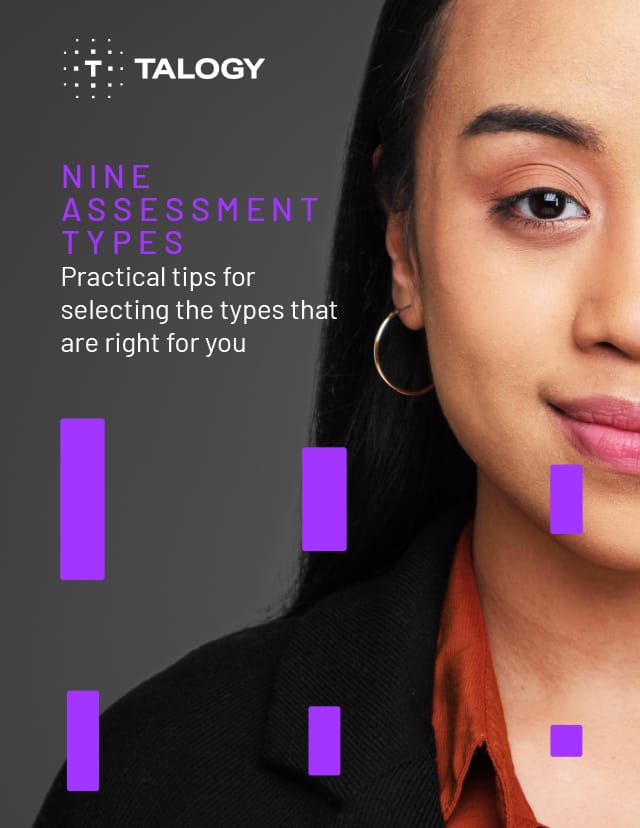Written by Laurie Wasko, Ph.D., former Director of Consulting Services
Pre-employment behavioral assessment implementations across organizations often go something like this:
Client: “We are raising the bar! We’ve identified what we are looking for in our future employees. Between the application, pre-employment assessments, a structured behavioral interview, and reference-checking tool, we will significantly increase our ability to make the right hire more often. We love the more objective approach. If a candidate scores below X on the assessment or the interview, we will NOT hire them. We’ll never again rely on subjective, unreliable, and inconsistent ways to evaluate candidates!”
Then we get the call . . .
Client: “Oh no – we have a candidate who… (insert any of these scenarios here: a) looks good on paper, b) worked with so and so before and they swear that they are really good, or c) is the niece of the director of such and such)… and they failed the assessment!”
Talogy: “Well, we did a job analysis – the competencies that we’re measuring are critical to success, right? We also did a validation study. We decided that for certain positions if someone fails the assessment, they won’t move forward because the data shows they don’t meet the minimum requirements and aren’t likely to succeed, right?”
Client: “But the hiring manager or the aunt isn’t happy!”
Here is where clients sometimes want to give the aforementioned candidate another chance due to the reference or how great they look on paper. This is when we want to consider the ins and outs of using a pre-employment assessment in the hiring process, and we take some time to share best practices, and help the client make the right call in their scenario.
Things to remember about pre-employment assessments
When it comes to pre-employment assessments, they are a valuable tool but not an end-all solution. The best organizations keep the following things in mind when a promising candidate fails their pre-employment assessment:
- It takes a lot to fail the assessment. The candidate likely scored REALLY low in some crucial attributes that would impact their ability to meet the basic qualifications of the job. For example, a frontline healthcare worker scoring below your pre-determined standards for compassion and patient-focus.
- Although we may have a preconceived notion about a candidate, the candidate still may not be a high performer in a particular job. The assessments are measuring key behavioral competencies and tendencies that are hard to observe in casual interactions. No source of information is as predictive or well-developed as an objective assessment.
- Basing experience solely on the resume or the opinions of former coworkers is not the best bet. How often do those candidates turn out to NOT be what you were looking for? Are you saying you’d let the niece through if she didn’t interview well? It sounds like in the past an informal reference from a former co-worker, a stellar resume, or being someone’s niece trumped the sort of objective data that predicts performance. How likely is that approach to help you build a high-performance culture where the performance bar is being raised, not lowered?
- Sometimes it is okay to leave a position open for a while. Recognize that there will be the occasional situation where keeping the position open a bit longer rather than taking a mediocre candidate is a better option.
- Consistency is key. From a legal defensibility perspective, there is much benefit to remaining consistent in your hiring practices. Exceptions to objective decision-making processes can lead to flawed processes.
Hiring recommendations and considerations
Pre-employment assessments prove to be useful, but they require an efficient system around them. They should be viewed as pieces within the full story of a candidate. Keep these tips in mind when implementing an assessment into the hiring process:
- Use pass/fail methodology only when it makes sense. When you have a large candidate pool, and you need to narrow your focus on those most likely to succeed, a pass/fail methodology has a lot of utility. Otherwise, think about using the candidate’s pre-employment assessment results as information considered as part of the overall decision-making process (rather than a hard cut).
- Do not use the assessment as the ONLY data point. You should have clear application requirements, resume requirements, phone screening requirements, interviewing requirements, and reference requirements – all of these make up an effective selection system.
- Do not underestimate the importance of coordination. A structured selection solution utilizes the invaluable resources of manager-level training and senior team buy-in. The organization needs to know that you are establishing a new bar for hiring quality and that it will be different than what they’ve done traditionally. They’ll understand the idea of ‘evidence-based’ hiring – i.e., putting tools and processes in place that statistically increase the likelihood of making better hiring decisions – decisions that support the organization’s goals. Know that you’ll likely need to re-do the training soon after someone’s niece (or best friend or former coworker) fails the test. Constant education and reinforcement are essential to sustained implementation.
- Finally – make sure you establish clear program performance metrics. Nothing gets everyone over these concerns faster than data showing that hiring managers are saving time. By interviewing fewer, better-qualified candidates, that time-to-fill rate decreases, turnover is reduced, and selection system data correlates with job performance.
Using tests as a hard cut point in the hiring process can have great utility. Many companies do it, but you probably need an assessment vendor/consultant who knows how to do this in an effective/legally defensible manner and in a way that’s likely to ‘stick’ in your organization.


